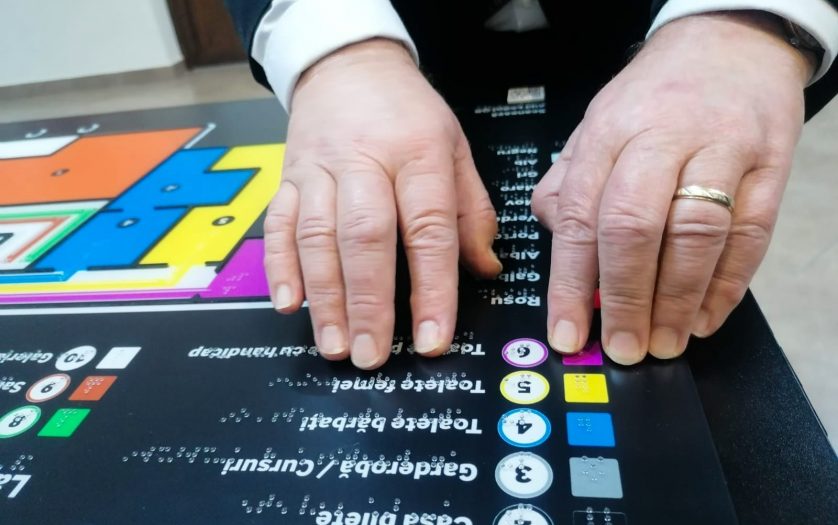Romania launched the Scripor Alphabet, a self-orientation map using the tactile alphabet of colors for people who are blind or low vision, an alphabet named after its inventor – Romanian painter Tudor Scripor.
The accessibility project was carried out by a team of blind people and was designed for The House of Culture, in Margita, Romania.
Based on the principle of Universal Design, the map provides innovative tactile-graphic information by combining both Scripor & Braille alphabet.
The haptic route to each destination within the building has a chromatic correspondence, and the people flow experience is fundamentally enhanced. Used in public institutions, hospitals, schools, airports, buildings, etc., the self-orientation maps are an all-inclusive source of information for people with vision disabilities, enabling their independence.
Furthermore, the maps have a “digital ready” design, by scanning the QR code with a smartphone camera; users will receive additional info of the building’s routes without an internet or GPS connection.
Despite the pandemic, we had with us the local authorities (Mr. Marcel Sas, Mayor), Romanian National Association for the Blind (Mr. Mihai Merca, Pres. of Bihor Branch, Mr. Prof. Silviu Vanda), and blind members of the Alphabet Scripor Association.
Here are some words about the Scripor alphabet and his creator, Tudor Paul Scripor:
The tactile representation of colors known as the Scripor alphabet is a concept based on the Braille alphabet’s continuation. This innovative, easy-to-learn, and universal alphabet allows the blind person to read, write, understand, remember, and recognize colors, efficiently. Using Universal Design principles, the Scripor alphabet is designed to empower people with visual disabilities, enabling them to live more fully in a colorful world.
Scripor Alphabet is a concept based on the Braille alphabet’s continuation and is used only for colors. A Braille cell is composed of six dots; two vertical parallel rows of three dots. The Scripor alphabet cell comprises ten dots in total; three columns, three rows with an orientation dot placed above the second column on the first row. Numbers identify the dot positions from one through nine, number 10 is allocated to the orientation point. A combination of dots from a single cell represents a color; any additional cells represent light or dark shades, tones, saturation, or intensity of colors.
Tudor P. Scripor was awarded Gold Medal with the compliments of the International Jury in the “Education, Culture and Art” category and Special Prize of the Association of German Inventors. President of Association European Inventors, Dipl. Ing. MBA INSEAD Mr. Joachim Bader, said: “your invention Scripor alphabet, your name Scripor Tudor Paul in which term SCRIPT is included. In psychological terms, this means you identify yourself to a hundred percent with your invention. This is significant for a real inventor! Bravo!”

